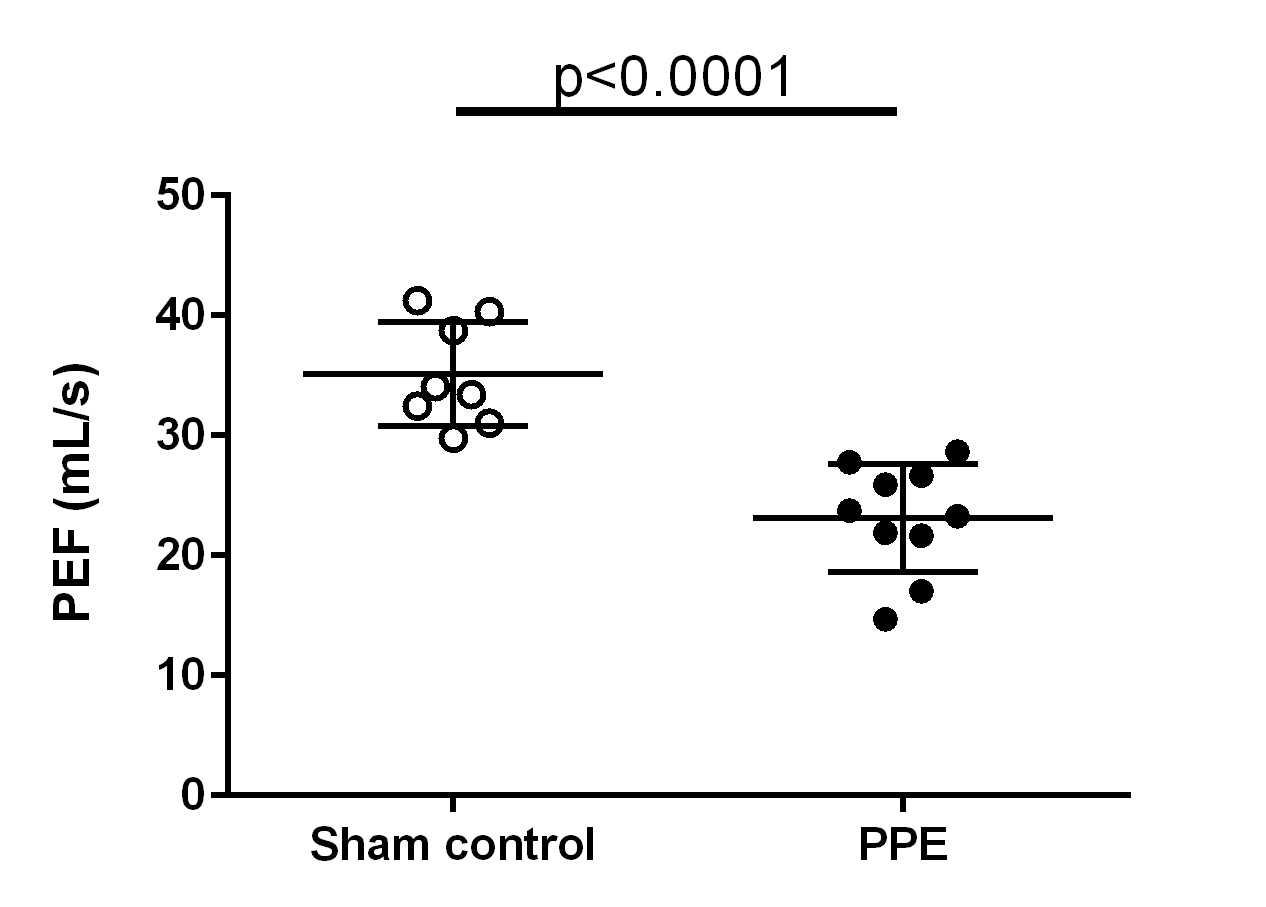Pulmonary Function Assessment in the Elastase-Induced Emphysema Model
At our company, we conduct preclinical evaluations using the elastase-induced emphysema (PPE: porcine pancreatic elastase) mouse model. This model reproduces pulmonary dysfunction associated with emphysematous changes and is widely applied in the research and development of COPD and emphysema therapeutics.
In this study, we measured Peak Expiratory Flow (PEF), a key indicator of lung function. Compared with the sham group, the PPE group showed a marked reduction in PEF, with a highly significant difference (p<0.0001).

These findings demonstrate that our elastase model faithfully reproduces the decline in lung function—“difficulty in exhalation”—observed in patients with COPD and emphysema. Since PEF is also used in clinical respiratory function tests, this model enables us to evaluate whether a candidate drug can truly improve lung function in a translationally relevant way.
Beyond morphological (histological) assessment, this model provides the ability to reproduce and assess clinically relevant lung function decline and its improvement, making it a highly reliable tool for determining the efficacy of novel therapeutics.
